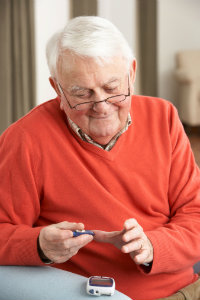3 Easy Ways to Prevent Falls and Stay Active
If you have osteoporosis and a fear of falling, your first instinct may be to dial down the physical activity in your life. After all, there’s less risk of stumbling if you’re safely seated in a chair or car. Isn’t there?
This kind of thinking is seriously outdated, says Fran Betts, district coordinator for the Erie division of the Victorian Order of Nurses and an older adults exercise and fall prevention instructor.
“Because osteoporosis is a painful degenerative joint disease, you can be tempted to stop moving,” says Betts, who herself has had both hips replaced due to osteoporosis. “But inactivity can actually increase your risk for fractures. Exercising regularly, and taking a few other precautions, is the best way to decrease your risk of falling.”
Exercise helps you increase or maintain your bone mass, your muscle strength and keeps you flexible and limber. And all of these can reduce your risk for injury and fracture.
Don’t let a fear of falling rule your life and leave you sitting on the sidelines. Instead, consider these three simple fall prevention strategies:
- Focus on leg and core muscle strength
Do leg and core muscle strengthening exercises daily to make you more stable and secure on your feet. Ask your healthcare provider for a fracture risk assessment and for exercise recommendations that are best for you. Exercises such as side leg lifts, calf raises and wall slides are often good choices. Learn proper technique from DVDs or live exercise classes designed for people with osteoporosis. - Get moving with Nordic walking poles
Weight bearing activity, core muscle strengthening and attention to posture are all common fall prevention strategies. Recent research shows that Nordic walking targets all three of these areas, says Mandy Shintani, an occupational therapist with Urban Poling Inc. and who teaches fall prevention classes.“Nordic walking poles also increase upper body strength and provide stability and confidence, and they can be used for support during standing exercises,” says Shintani. People with very significant stability issues should consider rehab walking poles, such as the Urban Poling Activator, which are an increasingly popular choice with therapists and hospitals, she adds. - Rework your living and office space
Remove tripping hazards by eliminating clutter, such as loose rugs, storage boxes and magazine racks. Then look for opportunities to sit less and move more. For example, get up regularly from your chair and stretch, take a stroll, stand during phone calls or accomplish errands on foot.


There are no comments